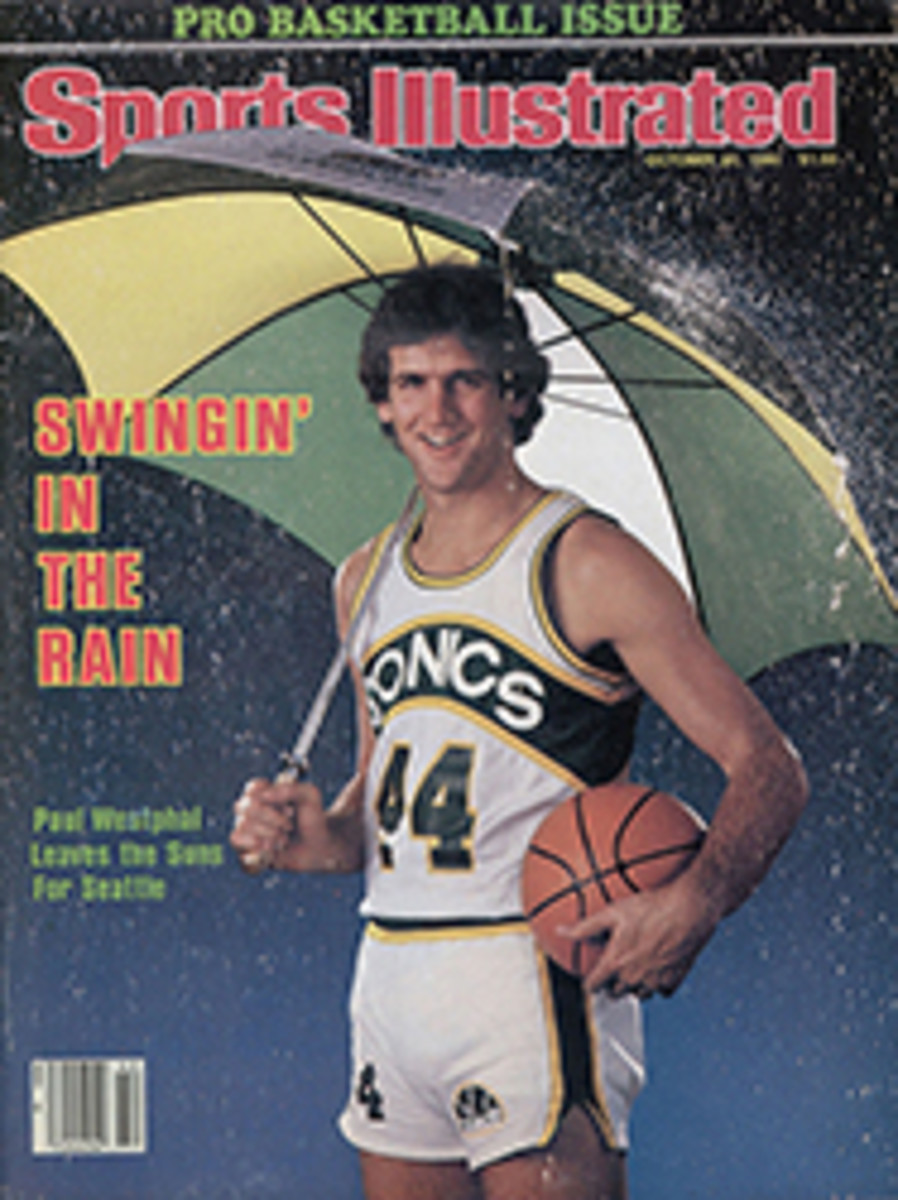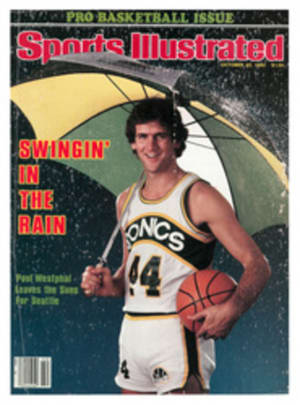
An All Black and blue day
Two years ago, when Lt. Comdr. Lin Walton, a U.S. Navy helicopter pilot, was touring New Zealand with his rugby club and playing against provincial teams, he was asked, "What is the greatest thing you could do in rugby?" Walton replied, "To play against the All Blacks in my hometown of San Diego, in front of my family and friends, as a member of the Eagles." He didn't say anything about winning.
It was a ridiculous idea, as Walton well knew. He was already 32 years old, and the Eagles, the U.S. national rugby team, had shown little interest in him. Besides, the mighty All Blacks, the best side in the world, would never deign to play a team that in its five years of existence had a record of 1-7 in international competition. The All Blacks, in 77 years, were 129-50-11. They had played a U.S. team only once in the U.S., in 1913, beating those all-stars 51-3. But the rugby brotherhood is strong. The All Blacks, planning a trip to Wales, astounded the sport's U.S. Establishment last Sept. 26 with an offer to stop in California for a warmup. And Walton, through a fortuitous combination of his outstanding play and injuries to others, was suddenly soaring with the Eagles. It remained to be seen how high they could go together when they faced the New Zealanders last week in—you got it—San Diego.
The All Blacks' tour came at the end of their season, and the Eagles had not played together since June, when their season concluded. But before the match Eagle Manager Bob Watkins said of the visitors, "They're scared to death. They've got everything to lose by playing us and nothing to gain. But win or lose, we'll be pushed farther into the international sphere and out of an era when U.S. rugby was just a social sport."
Jay Hansen, an Eagle hooker (the equivalent, roughly, of a football center), put it this way, "As for getting gross and bizarre, it just doesn't happen at this level anymore."
Certainly the voice of Jeff Hollings, another Eagle hooker, was a sober one. Born in New Zealand and now an engineer in Albany, Calif., Hollings began playing rugby at the age of five, not unusual for a boy Down Under, but rare for an Eagle, few of whom started before the age of 20. "The American game has developed," he said, "but we still haven't learned how to combat the finesse of the overseas teams."
Andy Haden, the All Blacks' 6'7", 238-pound lock (rugby's answer to football's offensive guard) was playing at the age of five, too. "Every small boy in New Zealand wants to be an All Black," he said, "and I was no different. That's why our standards are so high. Being an All Black is like being a New York Yankee." Apparently no one had told Haden about the Kansas City Royals.
As for other American sports, three days before the Eagles' game the All Blacks saw the San Diego Chargers lose to the Buffalo Bills. The reactions of New Zealand's Andy Dalton to his first taste of the NFL were typical. "In that game you've got guys who never touch the ball," he said. "The only thing going for that game is all those Sheilas out there waving their arms." As for the Eagles, Dalton said, "I've heard all sorts of things. I suppose they'll show us a few of those gridiron passes."
The Eagles were thinking only of rugby. In practice they tested themselves on a device called a Gutbuster Scrum Machine—designed to replicate the other side in a scrum. It consists of four leather pads for shoulders to rest on, and is mounted on two mighty springs. Everything is bolted to a two-foot-thick post. Coach Ray Cornbill would call out "ready-aah" before each of three successive assaults. More than once Cornbill said, "The last two were really good. See how far the springs went in? But against the All Blacks the first push may be the most important."
"Lots of our guys are practice-weary and game-fit," said the Eagles' team physician, Dr. John Chase. He was certainly half right. The Eagles lineup had been selected after a hard-fought test game only four days before the showdown against the All Blacks; U.S. rugby is still too poor to have held the trials any earlier.
On the eve of the game the Eagles were summoned to a kangaroo court. "These guys are all knotted up. This will help them to laugh and relax," Cornbill explained. Brian Swords was a 6'9" Horrible Hanging Judge, with a rugby shoe for a gavel. He fined Assistant Coach Rod Sears 75¬¨¬®¬¨¢ for "impersonating a shrink"; the previous day, during stretching exercises, Sears had made the mistake of saying, "Close your eyes and relax." Swords took an equal amount from Hollings "for impersonating an American"; Hollings had said "thdeen" instead of "thirteen," and "fore and arft" instead of "forward and backward." And Walton, dubbed Media Man because, as the local hero on the Eagles, he was so heavily pursued by San Diego journalists, was hit for $3.75 for having told a reporter that rugby was less important to him than his family.
But then the time for kidding around ran out. Haden looked across San Diego Stadium at Swords and exclaimed, somewhat in amazement, "I'm marking a fellow two inches taller than me."
The All Blacks won the toss, kicked off to get the ball downfield and quickly had the Eagles on the defensive. Although play moved up, down and across the pitch—actually, San Diego Stadium, the home of the Chargers and the Padres—for quite a while it was confined to Eagle territory. The American backs were defending surprisingly well, but that was all they were doing, and they were getting tired and clumsy in the process. Eight minutes into the game a dairy farmer by the name of Brett Codlin kicked a penalty goal, and the score was 3-0 for the All Blacks.
In the scrums the All Blacks were pushing the Eagles off the ball; Cornbill had been right about that first push on the Gutbuster. And when the Eagles mounted offensive rushes, they kept turning the ball over. Once Walton, a wing, broke away, but the All Black backs were stretched out and waiting; there is no blocking in rugby, so Walton's teammates could do nothing to protect him.
The All Blacks continued to pound on and led 21-0 at halftime. Meanwhile, the spectators were still filing in, prompting one San Diegan to say, "People are always arriving late in this town, to everything. I've seen lines outside live theater an hour after curtain time." And the new arrivals were being shunted to the seats on the side of the field opposite the four TV cameras. Tony Scott, who was working the broadcast for ESPN, had said, "This game will make or break televised rugby in this country." But he did not say which was more important, a good showing by the Eagles or a stadium that seemed packed. In any event, the 14,000 fans who filled the sections of the stands that the TV viewers would see comprised the largest crowd ever to see a rugby game in the U.S.
Early in the second half the Eagles scored a victory of sorts; an All Blacks' try put them ahead 25-0, but Codlin missed the conversion, albeit from a difficult angle. Minutes later Codlin and his mates were back on the beam, though, and the New Zealanders led 31-0. Then a wondrous thing happened. A pediatrician from Memphis named Dick Cooke made a beautiful 40-yard penalty kick, and the Eagles were on the board with three points. Few of the fans on hand knew or would've cared that Cooke had been born in Ireland, or that he had started playing rugby at the decidedly un-American age of 12.
With 10 minutes remaining in the game, Cooke booted another three-pointer. But the two kicks were the only damage the Eagles could inflict, and sandwiched between them had been three more All Black tries—a third by Woodman and a second by Osborne—and two more conversions. By Codlin, of course. After Codlin swung his mighty foot for the last time, scoring his 21st point, on six conversions and three penalty kicks, the final score was All Blacks 53, Eagles 6, one point closer than the 51-3 of 67 years ago. At that rate the U.S. can expect a tie game in the year 5129.
After the postgame banquet a chastened Watkins was telling friends, "My expectations were higher for tonight, but knowing who the All Blacks are and seeing the teamwork and precision of their play, I'm not disappointed. They've got tremendous discipline. We need a little of that."
And Walton was feeling just fine. He had played against the All Blacks in San Diego, in front of his family—his 9-year-old son, Lin Jr., had been the ball boy for the Eagles—and friends, as a member of the Eagles. And he had played well. Remember, he had never said anything about winning.
PHOTO
As the visitors ran the score toward 53-6, the outclassed Eagles handled the ball like a hot potato.
PHOTO
For the All Blacks' Brett Codlin, it was just a romp in the park as he scored 21 of their 53 points.

